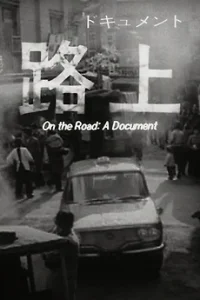Hidden Roads, Human Truths: How Noriaki Tsuchimoto's 'On the Road: A Document' (1964) Defined Observational Documentary!
In the fertile, often politically charged landscape of post-war Japanese cinema, the documentary film emerged as a powerful tool for social commentary and human observation. While many filmmakers focused on grand narratives or political polemics, Noriaki Tsuchimoto carved out a unique and profoundly influential path, becoming a revered master of direct cinema and ethnographic filmmaking. Tsuchimoto was not just a director; he was a meticulous observer, committed to capturing the unvarnished realities of marginalized lives and the nuanced dynamics of social issues with empathy and an almost forensic precision. His work, particularly his later groundbreaking investigations into the Minamata disease tragedy, would cement his legacy as a filmmaker who used the camera not to preach, but to bear witness and demand understanding. On the Road: A Document (1964), or Rōjo o Yuku, stands as an early, crucial testament to this observational genius, offering a poignant and deeply human glimpse into a hidden facet of Japanese society.
On the Road: A Document immerses us in the seldom-seen lives of a group of female street performers, known as naga-ashi or "long legs," who travel rural Japan selling traditional medicines and performing for meager coins. The film focuses primarily on an aging grandmother and her granddaughter, chronicling their arduous journeys, their daily struggles, and their resilient spirit as they navigate a changing society. Tsuchimoto's camera is a patient, non-judgmental observer, following these women as they set up their makeshift stages in small villages, interact with curious locals, and endure the physical demands of their nomadic existence. It’s a quiet, deeply empathetic portrait of a disappearing way of life, highlighting the dignity found in labor, the bonds of family, and the profound resilience of those living on the fringes of modernity, offering a rare window into the social fabric of rural Japan in the mid-1960s.
Noriaki Tsuchimoto's directorial approach in On the Road: A Document is a masterclass in direct cinema, characterized by its unobtrusive style and its commitment to authenticity. The film largely eschews overt narration or dramatic interventions, allowing the images and the subjects' own voices (or often, the sounds of their environment) to tell the story. The black-and-white cinematography is stark yet intimate, capturing the rugged beauty of the Japanese countryside and the weathered faces of its subjects with an honest, unromanticized gaze. This documentary doesn't seek to sensationalize or manipulate; instead, it invites the audience to simply observe, to listen, and to connect with the human experiences unfolding on screen. It stands as an early, powerful example of Tsuchimoto's enduring philosophy: that true documentary filmmaking lies in patiently witnessing reality and presenting it with clarity and compassion.
Director: Noriaki Tsuchimoto.
Cast: The film features non-professional subjects, focusing on the lives of specific female street performers (a grandmother and granddaughter) as they travel and perform.
Special Info/Trivia: On the Road: A Document is an early, significant work by Noriaki Tsuchimoto, who would later become famous for his Minamata disease documentaries. The film is a prime example of Japanese direct cinema, emphasizing observational filmmaking with minimal intervention. It explores a disappearing traditional occupation of female street performers (naga-ashi) in rural Japan. The film was produced by Iwanami Productions, a key independent documentary production house in Japan.

